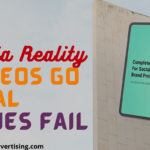Top Strategies to Optimize Content for AI-Driven Platforms (2025)
The way people discover information online is changing rapidly. While Google SEO remains vital, AI-driven platforms — from ChatGPT and Gemini to Perplexity and voice assistants — are becoming major gateways for answers.
For startups, creators, and businesses, the question is simple: How do you make sure your content is found, ranked, and recommended by both search engines and AI models?
The answer lies in optimizing for AEO (Answer Engine Optimization) and LLMs (Large Language Models). This article explores the top strategies to make your content visible and valuable in the age of AI search.
1. Understand How AI Platforms Process Content
Unlike Google, which ranks pages based on backlinks and technical SEO, AI-driven platforms rely on:
- Contextual relevance (how directly your content answers queries).
- Authority signals (expert tone, credible sources, structured data).
- Clarity of language (easy-to-read, conversational).
📌 Takeaway: Write content that is not just keyword-rich but question-focused and answer-ready.
2. Prioritize Answer Engine Optimization (AEO)
AEO is about creating content that can be surfaced as a direct, concise answer. AI search thrives on Q&A formats.
How to implement AEO:
- Use clear subheadings that mirror common questions (e.g., “What is AEO in SEO?”).
- Provide short, direct answers within the first few lines.
- Expand later with examples, data, and context.
This dual structure ensures your content works for both AI snippets and human readers.
3. Structure Content for AI and Humans
AI models prefer content that is well-structured, scannable, and consistent. You can achieve this by:
- Short paragraphs (2–3 sentences each).
- Bulleted lists and tables for clarity.
- Headings and subheadings (H2/H3) with natural keywords.
- Schema markup (FAQs, how-to guides, product info).
The goal is to make it easy for AI to parse while keeping it engaging for people.
4. Create People-First, Conversational Content
Google’s Helpful Content guidelines and AI platforms both reward authentic, people-first content.
Best practices:
- Write in a conversational tone that feels like direct advice.
- Add real-world examples, case studies, and founder insights.
- Avoid keyword stuffing; instead, use semantic variations (LSI keywords).
Example: Instead of repeating “AI content optimization” 10 times, use related terms like AI-driven SEO, optimizing for AI search, LLM-ready content.
5. Leverage Data and Authoritativeness
AI models favor content backed by facts, data, and expertise. If you want your content to appear in AI summaries, include:
- Credible statistics (cite industry reports).
- Expert commentary (quotes, unique insights).
- Links to trusted sources (to signal authority).
This builds E-E-A-T (Experience, Expertise, Authoritativeness, Trustworthiness) — a key ranking factor for both SEO and AI visibility.
6. Optimize for Long-Tail and Conversational Queries
AI-driven platforms excel at answering natural language queries. Instead of just optimizing for “AI SEO,” also target:
- “How can I optimize content for AI-driven search engines?”
- “What strategies work for AEO in 2025?”
📌 Pro Tip: Use tools like Google People Also Ask, AI search suggestions, and Reddit/Quora threads to find conversational queries.
7. Enhance Content with Multimedia & Context
AI doesn’t just read text — it interprets context. Adding supporting elements can increase visibility:
- Infographics with alt text.
- Videos with transcripts (great for YouTube + Google Discover).
- Charts, step-by-step visuals, or carousels.
This makes your content multi-modal, which aligns with how AI platforms deliver answers.
8. Keep Content Fresh and Up to Date
AI systems value recency because they’re trained on frequently updated data. Outdated posts are less likely to appear.
Action plan:
- Regularly update stats, examples, and references.
- Add a “last updated” timestamp to posts.
- Refresh older articles with new insights to maintain ranking.
9. Optimize for Featured Snippets & Zero-Click Results
Google snippets often feed AI models. By targeting snippet optimization, you improve both SEO and AI visibility.
Tips:
- Answer questions in 40–60 words.
- Use definition-style responses for “What is” queries.
- Add step-by-step formats for “How to” guides.
10. Build a Strong Brand & Author Presence
AI platforms increasingly highlight trusted sources. This means your brand authority and author credibility matter.
Practical steps:
- Create author bios that show expertise.
- Publish under real names (not anonymous).
- Build brand signals via LinkedIn, podcasts, guest posts, PR mentions.
The stronger your digital reputation, the more AI platforms will “trust” and surface your content.
FAQs (AEO-Optimized)
Q1: What is AEO in SEO?
AEO (Answer Engine Optimization) is the practice of structuring content to be easily picked up by AI-driven search engines and assistants.
Q2: How do AI platforms rank content?
They prioritize clarity, authority, and contextual relevance — focusing on helpful, conversational answers rather than keyword density.
Q3: Is SEO still important in the age of AI search?
Yes. SEO builds discoverability on Google, while AEO ensures visibility on AI-driven platforms. Both complement each other.
Q4: What types of content perform best on AI platforms?
Q&A guides, how-to articles, case studies, and updated resources with strong authority signals.
Final Thoughts
The shift from search engines to answer engines is reshaping digital visibility. To succeed, content creators and founders must go beyond SEO and embrace AEO + LLM optimization.
By focusing on clear answers, structured formats, fresh updates, and brand authority, you’ll ensure your content ranks — whether on Google, ChatGPT, Gemini, or the next AI-powered search.




